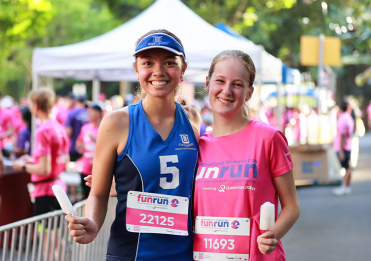National Reconciliation Week is a time for us, as a community, to consider how far we have come and how far we have yet to go in the ongoing relationship between First Nations people and non-Indigenous Australians. Do we ever arrive at an end point in this journey? Will there ever be a time when we no longer need a Reconciliation Week because we have arrived at a point of harmony and social cohesion? Former Senator and Yawuru elder from Broome, Western Australia, Pat Dodson—a champion in the struggle for equality—asserted that ‘reconciliation must transcend Australian political theatre and promote a sense of national unity’ (Dodson, 2021)—reconciliation is an ongoing process whose goal is unity and like any relationship, it takes ongoing work on both sides.
Central to reconciliation is an acknowledgement of past wrongs and the harm they have caused. Reconciliation Australia (2024) articulated acceptance of history as one of the five dimensions in the goal of achieving national unity. Acceptance of history is not always easy—it means fronting some uncomfortable truths about our past, such as the Frontier Wars, the Stolen Generations and Aboriginal deaths in custody. We know that history reverberates into the present, and it is only through honest acknowledgement of past hurts that true healing begins. The government’s 2008 apology to the survivors of the Stolen Generations marked an important milestone in this healing process.
The 1990s was a momentous decade in the journey towards reconciliation. It was a time of reckoning with our past. We saw the formation of the Aboriginal and Torres Strait Islander Commission (ATSIC) in 1990 and in the following year, the establishment of the Council for Aboriginal Reconciliation. The Report of the Royal Commission into Aboriginal Deaths in Custody was handed down in the same year. This report represented the most comprehensive examination of Australia’s First Peoples’ experiences ever carried out. The tent embassy was re-established in front of Old Parliament House in Canberra 1992, and in the same year the historic Mabo decision of the High Court overturned the legal foundations (terra nullius) of Australia’s colonisation. In 1997, the Bringing Them Home report, which was the result of a two-year inquiry into the separation of Aboriginal and Torres Strait Islander children from their families, was published. According to Professor Robert Manne (2021), ‘no inquiry in recent Australian history appeared to have, at least in the short term, a more overwhelming reception and a more culturally transforming impact … The question of Aboriginal child removal moved rapidly from the margin to the centre of political debate.’ The emerging willingness to listen represented a shift in our national identity.
This reckoning was also evident in the classroom, with stories of dispossession and removal being told, with the Bringing Them Home report, for example, an important source. This was a far cry from the way history was taught when I was at school in the 1980s. Back then it was all about convicts, bushrangers and explorers—stories of white men conquering an inhospitable land and its native peoples.
The teaching of what came to be termed in the ‘90s as ‘hidden history’ was not without controversy, as teachers found themselves at the forefront of the so-called ‘history wars’. Accused by some in the political arena of imparting a ‘black armband’ version of Australia’s past, they were seen to be encouraging feelings of guilt and shame over past actions, which seemed to have very little to do with the students’ own lives. Our then Prime Minister, John Howard, asserted his views on the topic:
‘(The black armband view) of our history reflects a belief that most Australian history since 1788 has been little more than a disgraceful story of imperialism, exploitation, racism, sexism and other forms of discrimination. I take a very different view. I believe that the balance sheet of our history is one of heroic achievement and that we have achieved much more as a nation of which we can be proud of than which we should be ashamed’ (Howard, 1996).
Howard’s assertion reflected a certain binary approach which was also evident in the broader community, and regarded Australia’s past as one of either triumph or shame. The reality is that all history was, and is, a contested space in which there is never one singular version—regardless of topic, location or era, our recollections of history are contextualised by our own experiences, views and memories—and it’s also possible to hold various positions, and sit with the discomfort that brings.
While truth-telling remains fundamental to the ongoing relationship between First Nations and non-Indigenous Australians, we no longer speak about ‘hidden histories’ in the classroom because these histories have been, and continue to be, brought into the light. This, in turn, has led to a more mutual understanding in the dialogue between First Nations and non-Indigenous people—however, we know there is more to achieve.
As a School, the 2014 establishment of the Uralla Club represents such reciprocity, in one simple, yet incredibly meaningful way. Inaugurated at a grass roots level by two Year 10 students, the club is a forum for students and staff to learn about Indigenous arts, cultures and achievements, and promote awareness of issues affecting Aboriginal and Torres Strait Islander Peoples. One of the most important initiatives supported by the Uralla Group, under the leadership of Ms Abby Hills and Ms Susan Garson, was the creation of the Reconciliation Action Plan (RAP)in 2022. This plan emerged from a desire to see a more formalised and school-wide approach to reconciliation. Based upon the Narragunnawali: Reconciliation in Schools and Early Learning framework, the RAP aligns to this Reconciliation Australia framework, and with the Australian Curriculum. The Plan enables us to gauge our dedication to reconciliation by establishing specific, measurable goals centred on fostering relationships, respect, and opportunities. These goals ensure that reconciliation is not just a pursuit, but a lived reality within our classrooms and throughout our school community. According to Ms Abby Hills, it ‘provides a framework for BGGS to take steps to foster more meaningful and reciprocal relationships with Indigenous Australians, promote cultural awareness, and embed the Aboriginal and Torres Strait Islander Histories and Cultures cross-curriculum priorities’ (Hills, 2023).
Reconciliation does not necessarily follow a linear trajectory, nor does it have a definite end point. Rather, it represents an ongoing dialogue between and among all Australians, which hopefully culminates in a deep, mutual understanding and respect. While we have made much progress in this space, we know there is, always, more to do on this journey toward reconciliation.
References
Dodson, P. (2021). The State of Reconciliation in Australia. https://www.reconciliation.org.au/wp-content/uploads/2021/03/State-of-Reconciliation-Report_SUMMARY.pdf
Hills, A. (2023). The Brisbane Girls Grammar School Gazette.
Howard, J. (1996, November 18). The 1996 Sir Robert Menzies Lecture: The Liberal Tradition. https://pmtranscripts.pmc.gov.au/release/transcript-10171
Manne, R. (2001, April). In Denial. The Stolen Generations and the Right. https://www.quarterlyessay.com.au/essay/2001/04/in-denial/extract
Reconciliation Australia. (2024). https://www.reconciliation.org.au/




